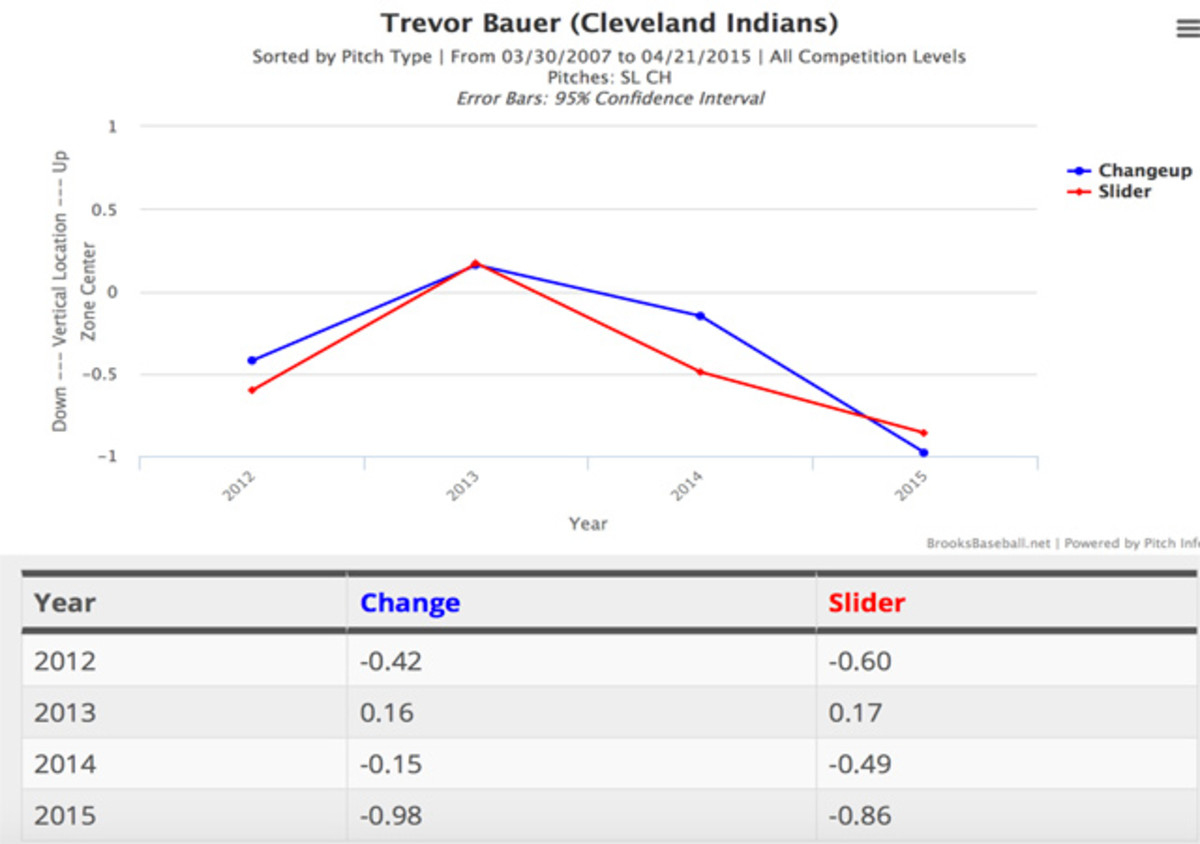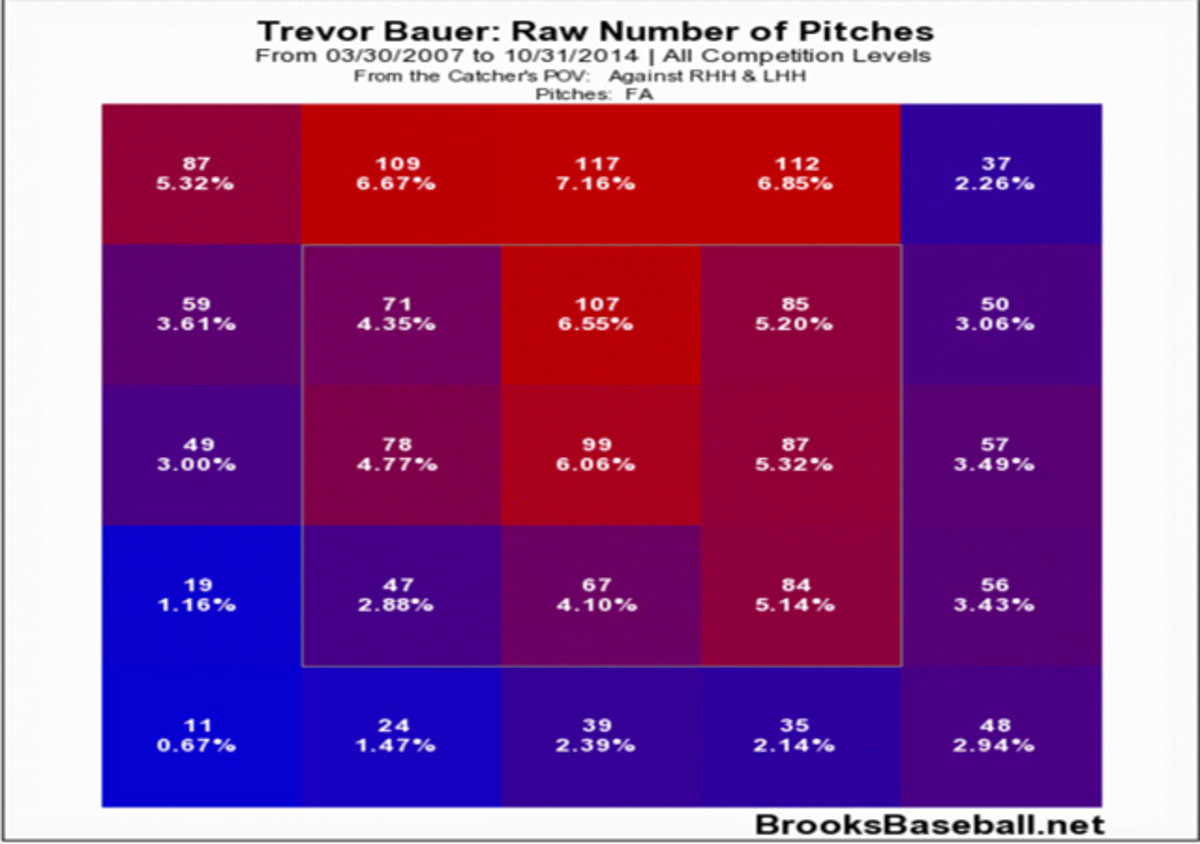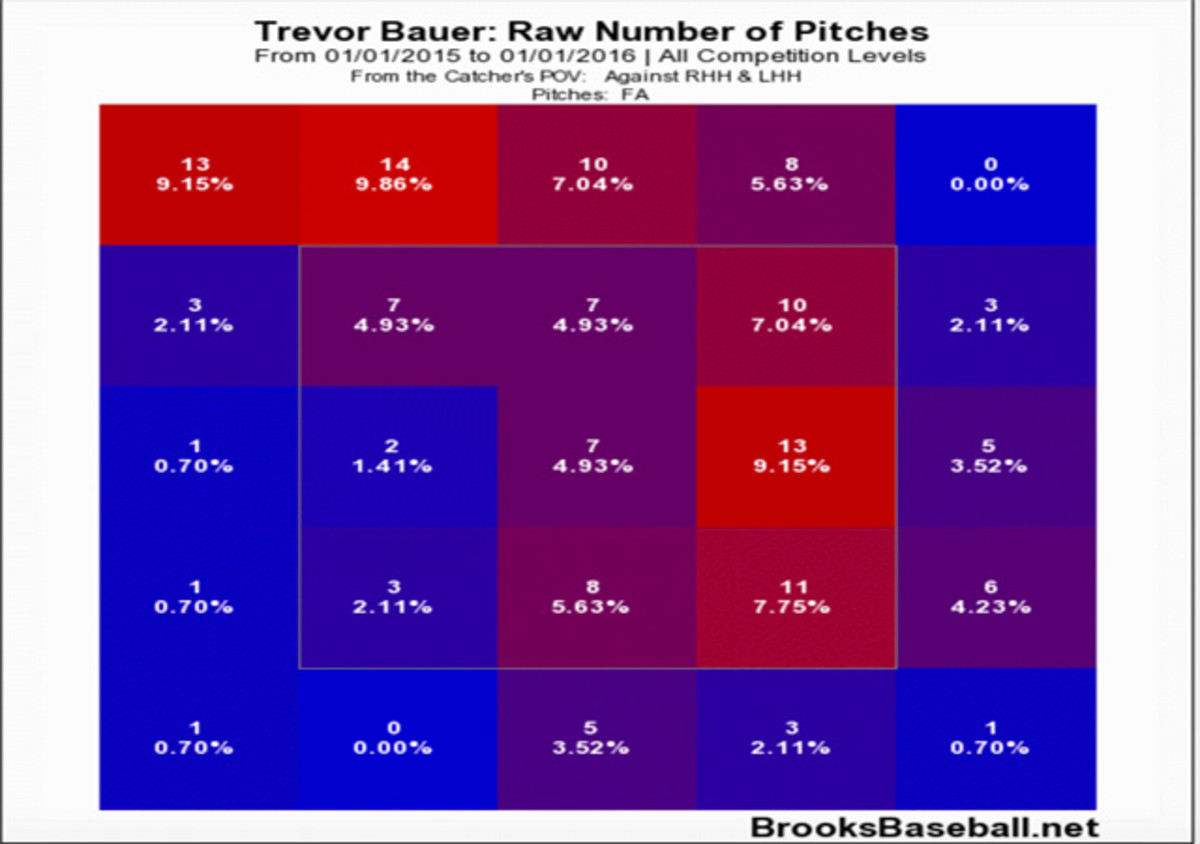Pitcher Scouting: Bauer looks ready to realize his immense potential

It’s easy to interject an exasperated “finally” into a discussion about Trevor Bauer’s hot start this season. Bauer’s been on the baseball world’s radar since the Diamondbacks selected him with the third pick of the 2011 draft, but from that point, everything has seemed like a disappointment.
It took Bauer 51 minor league starts across three seasons before becoming a major league regular last year. When a guy spends that much time in the public consciousness without breaking through, it’s only natural that there’d be some fatigue surrounding his name. That makes it easy to overlook the fact that he’s still just 24 years old, and that all the signs point to 2015 being a breakout campaign. Bauer’s path was more deliberate and circuitous, but it now appears that he’s here to stay.
Hitting Report: Nelson Cruz providing Mariners with tons of power early on
Talent has never been the issue with Bauer. Command, on the other hand, has never come easy. In 323 1/3 minor league innings, Bauer issued 160 walks, or 4.5 every nine innings. A pitcher could have Clayton Kershaw’s stuff and not get away with surrendering that many free passes. Bauer’s walk rate this year remains far too high at 5.2 per nine, but a lot of that owes to the five walks he allowed in his first start of the season. More importantly, 46.2% of Bauer’s pitches this year have been in the strike zone. League average varies from year to year, but it’s generally around 45%. Bauer needed to be in the strike zone more frequently, and he has been there through his first three starts.
Now that Bauer’s attacking the zone, his secondary pitches are far more effective. In the early going, Bauer’s slider and changeup have both been go-to out pitches. The slider has a whiff rate of 26.9%, and the changeup has induced empty swings 14.3% of the time. Even when hitters have managed to put those offerings in play, they haven’t done much. Bauer has allowed a .154 batting average and identical slugging percentage on his slider, and batters are hitting just .100 with a .200 slugging percentage against his changeup. Let’s take a look at both, starting with the slider, in a recent start against the White Sox.
That slider was an important pitch for Bauer in this start: He threw it 26 times, more frequently than any pitch other than his four-seam fastball. Judging by that GIF, it’s easy to understand why. Bauer’s slider is averaging 85.4 miles per hour, up three full ticks from last season. In this offering to get strike three against Geovany Soto, you can see that his slider can have the shape of a 1-to-7 curveball. Still, he’s getting more than four inches of horizontal movement on average, a number that would likely have him in the top-15 in the majors if it holds all season.
Now, let’s check out the changeup:
Pitching Report: deGrom delivering for fantasy owners in first two weeks
There are a lot of great things to say about this pitch. Bauer missed his spot by the width of the plate, yet still made LaRoche look foolish by getting him out in front. The pitch has exactly the trajectory you’re looking for in a dominant changeup, from both a horizontal and vertical standpoint. When you have three plus pitches, you can often get by with brute force. That’s exactly what Bauer did here.
When a pitcher combines the power of overwhelming stuff with the finesse of precision command, he can reach a new level. Through three starts, it appears Bauer may be doing just that. The following graph from Brooks Baseball charts the vertical location of Bauer’s slider and changeup for each year of his career. This season is all the way to the right.

. That’s exactly where he wants to live with those two pitches. If he can consistently spot those pitches down, he’ll continue to get whiffs and ground balls.
Pitcher Scouting: Can Greene hang onto this impressive start?
Here’s the rub, though: Bauer’s secondary pitches have always been pretty good, especially on their measurables. The slider and changeup have always had devilish movement, and they were the primary reasons why he rated so highly as a prospect, even as he was walking seemingly ever other batter he faced. What has really changed this season—and unlocked the potential of those pitches to make hitters swing and miss—is his fastball command.
Heading into the season, opposing hitters had a .291 batting average and .475 slugging percentage against Bauer’s fastball in his career. This year, they’re 4-for-29 (.138) against the pitch, with just one of those four hits going for extra bases. Bauer has always thrown hard, but major league hitters can catch up to anything that isn’t spotted well. All too often, Bauer missed in the zone with his fastball before this season. The following is his zone profile with the fastball through last year.

That’s too much red and bright purple, especially up in the zone. Compare that to this year, and you get an idea for how Bauer has been better at spotting his fastball.

Cabrera in an earlier outing against the White Sox.
Bauer absolutely eats up Cabrera here, breaking his bat and getting weak a groundout to first.
Fastball command is the foundation upon which all dominant pitching can be built. Now that he’s on that solid ground, Bauer looks ready to realize the potential he has had during his entire professional career.
